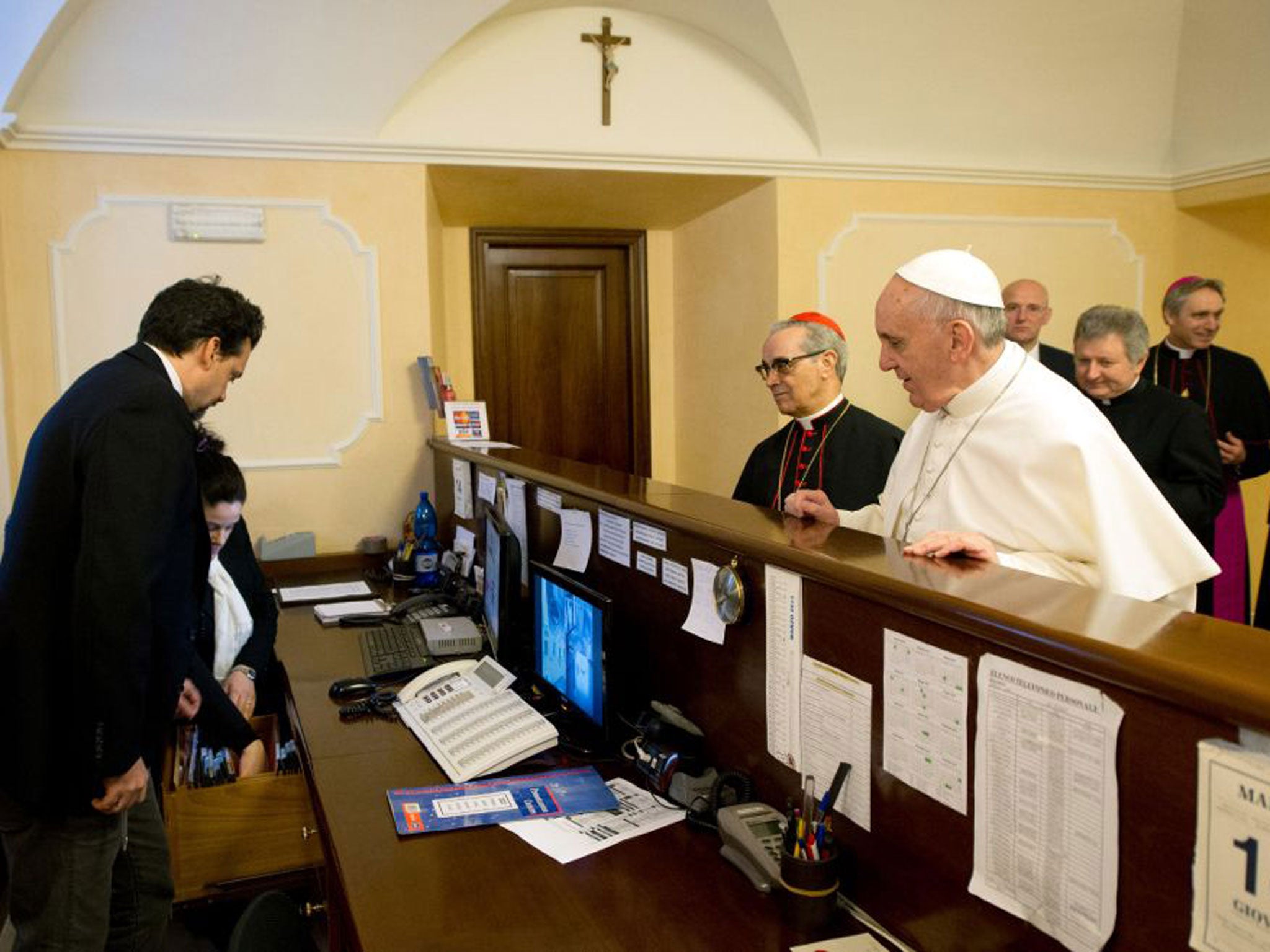'The Slum Pope? He is bigger than that – he is for all the poor people'
Before becoming Pope, Jorge Mario Bergoglio won the hearts of the slum people ministering to the poor and sick

Your support helps us to tell the story
From reproductive rights to climate change to Big Tech, The Independent is on the ground when the story is developing. Whether it's investigating the financials of Elon Musk's pro-Trump PAC or producing our latest documentary, 'The A Word', which shines a light on the American women fighting for reproductive rights, we know how important it is to parse out the facts from the messaging.
At such a critical moment in US history, we need reporters on the ground. Your donation allows us to keep sending journalists to speak to both sides of the story.
The Independent is trusted by Americans across the entire political spectrum. And unlike many other quality news outlets, we choose not to lock Americans out of our reporting and analysis with paywalls. We believe quality journalism should be available to everyone, paid for by those who can afford it.
Your support makes all the difference.It’s a long walk down the teeming streets of Villa 31, one of several shanty-town slums within the bounds of Buenos Aires, to the “Home of Christ” sanctuary of Father Guillermo Torre. Flea-bitten dogs and children share the gutters and motorway flyovers replace the sky for the breeze-block homes jumbled beneath them.
Father Guillermo, a stocky man with a dog collar undone and askew, escorts his visitors around his domain – a church under corrugated iron, a day centre for runaways and drug addicts and, finally, the burial site of Father Carlos Mugica, a priest killed by right-wing assassins in 1974 because of his work for the poor. It isn’t Mugica we are here to celebrate today, but rather the man who until last week was merely Cardinal Jorge Mario Bergoglio.
“He built of all of this,” Father Guillermo says of his friend who is now Pope Francis. While the leader of the church in this city, he helped find the money and provided the encouragement to build this and similar centres in the other slums – or Villas Miserias – in Buenos Aires. All are called “Home of Christ” and Bergoglio visited them as often as he could as part of his very public commitment to ministering to the poor.
Nowhere, not even in the other slums, is the reverence for Bergoglio more strong than here, however.
It was back in 1999 – soon after he became Archbishop of the city – that he arranged for the remains of the still iconic Father Mugica to be exhumed from the cemetery in the nearby middle class neighbourhood of Recoleta, where Evita is entombed, to this place for reburial, amongst the people he had cared and died for.
It was a day that Saul Sanchez, 48, a small grocery shop owner on what might be the main street of Villa 31, will never forget.
Today, he briefly abandoned his counter to run home for photographs showing him among a team of the younger men carrying the casket of Mugica to his burial ground. It was 9 October 1999. But if Mugica remains revered as the Slum Priest of Argentina, then to people here Bergoglio can surely be called the Slum Pope.
“He is a very simple man,” he says of Bergoglio, who used to come at least once a year to Villa 31 to give communion at a small brick shrine a few doors down from his shop and to confirm the young. “You know it because he liked to come here and just be with us. He is just a normal person, who would eat meat and stew with us and would even drink mate.” He was referring to the traditional “tea” of Argentina, an infusion of hot water and leaves often drunk from a dried vegetable gourd through a metal straw. As everyone here knows only one person was allowed to brew the mate when Bergoglio was coming. That would be Maria Picallo, who is 85, who lives at Casa 7 on Evita Street. She was preparing dinners for the poor at the small chapel a few blocks from Mr Sanchez’s shop when she heard the news of the new pope on Wednesday. It made her dance, she said last night. The new Pope loved her for her mate, she says. He would always take bitter, no sugar.
She is also one of the lucky ones of the slum who can say she knows Bergoglio, at least a little. Dressed in layers of cardigans with a necklace of white plastic hearts and a cross, she is moved when speaking of him.
“He is always smiling,” she said. “When he speaks total silence falls. Even the flies here stop when Bergoglio is talking.”
Back at the sanctuary, Father Guillermo recalls that Bergoglio also often visited all the other main slums, particularly Villa 21-24, perhaps the most dangerous in the city and not a place most outsiders would dare enter alone. It was there on Easter each year that the archbishop would wash and kiss the feet of the most afflicted, including those with Aids.
But call Francis the Slum Pope and Guillermo winces. “I would say he is something bigger than that,” he says. “He is not just for the slums, he is for all the poor people.” And not just in this city now, but for the Catholic faithful around the world.
Join our commenting forum
Join thought-provoking conversations, follow other Independent readers and see their replies
Comments